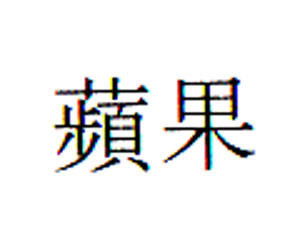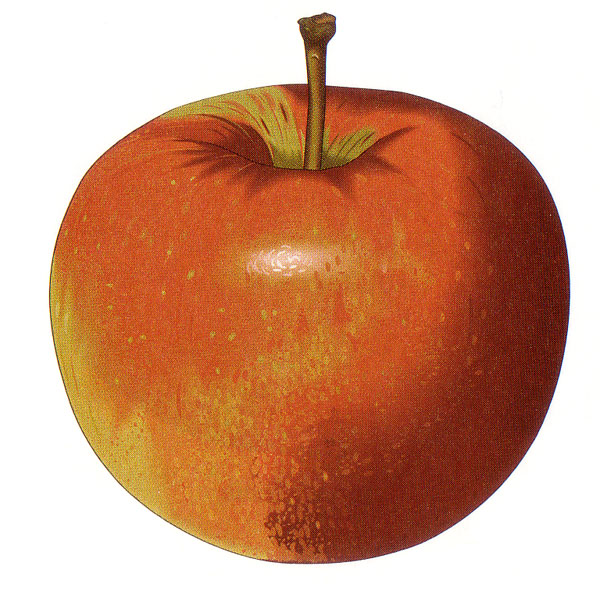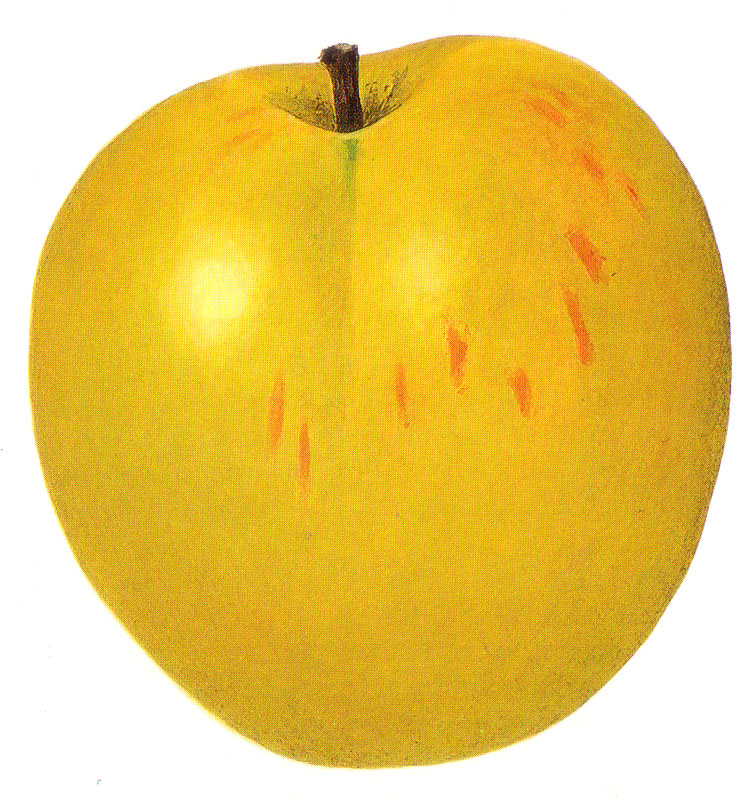
| What is Flavor and Fortune? |
| How do I subscribe? |
| How do I get past issues? |
| How do I advertise? |
| How do I contact the editor? |
Read 12952403 times
Connect me to:
| Home |
| Articles |
| Book reviews |
| Letters to the Editor |
| Newmans News and Notes |
| Recipes |
| Restaurant reviews |
| Article Index (all years, slow) |
| List of Article Years |
| Article Index (2025) |
| Article Index (last 2 years) |
| Things others say |
| Related Links |
| Log In... |
| Authors |
| Categories & Topics |
Apples
| by Jacqueline M. Newman |
Fruits, Desserts, and Other Sweet Foods
Winter Volume: 2010 Issue: 17(4) page(s): 29 and 30
 To the Chinese, the word for apples sounds similar to the word for peace. When you are shown a picture or painting of one, it can be a message wishing you peace, or prosperity, so perhaps the wish is for peace and prosperity.
To the Chinese, the word for apples sounds similar to the word for peace. When you are shown a picture or painting of one, it can be a message wishing you peace, or prosperity, so perhaps the wish is for peace and prosperity.
These interesting and popular fruits come from deciduous trees. There are many varieties of them, wild and domesticated; and all their flesh is liked fresh and dried for snacks and for cooking. They are prepared in many dishes, made into wines and juices, and used in other ways.
Leaves from apple trees are popular to make tea, and for reasons medicinal. Those from crab apple trees are even more popular for these two uses. In China and elsewhere, wild apple varieties are cultivated for their rootstock grafting less strong varieties on to them. Apples are grown in or near temples, prized to show off their red or pink flowers. Many homes have apple trees showing them off, too, when in bloom, and allowing artists to come and paint them. Some have several dwarf varieties in their front or rear yards to beautify them and bring their owners peace and prosperity, too.

 The Chinese use many different apple varieties. The two main genera were called Pyrus and Malus. More popular today is classifying all apples in the Malus family. The most popular among them, Pyrus malus,more commonly known now as Malus pulima. Also well known are Malus asiatica, Malus sylvestrus, Malus spectabilis, and Malus kansuensis. Malus pumila might be the most popular in this varietal handful; and sometimes Pyrus malus is called the 'Chinese apple.' There are other varieties such as Malus micromalus, known for its yellow fruit, Malus formosana, said to be native to Taiwan and Hainan Island, and Malus melliana which is native to and found commonly in and around Anhui and Yunnan.
The Chinese use many different apple varieties. The two main genera were called Pyrus and Malus. More popular today is classifying all apples in the Malus family. The most popular among them, Pyrus malus,more commonly known now as Malus pulima. Also well known are Malus asiatica, Malus sylvestrus, Malus spectabilis, and Malus kansuensis. Malus pumila might be the most popular in this varietal handful; and sometimes Pyrus malus is called the 'Chinese apple.' There are other varieties such as Malus micromalus, known for its yellow fruit, Malus formosana, said to be native to Taiwan and Hainan Island, and Malus melliana which is native to and found commonly in and around Anhui and Yunnan.
All apples can be red, green, or yellow or a mix of these colors depending upon species, when they are picked, the place where they are grown, the type of fertilizer used, and/or other variables, the genus and species the most dominant influence.
In China, all apples are known as ping guo. Some crab apples are called ji ling, qui zi, or xi fu hai tang; and the Siberian crab apple is known as shan jing. The tea crab apple is known for its leaves and the crab apple most popular for apple tea. In addition, some northerners mix these leaves into their tea and also mix them with oak leaves. The fruit of these crab apples and others are also used to make apple wine.
Crab apples were known and popular in China thousands of years ago. Writings about them call them 'sweetish in flavor, lacking in poisons, able to control thirst, and delightful in aroma.' They are particularly liked when sugared, candied that is. In the Everyman's Illustrated Compendium, they say that one can take green ones (meaning those under ripe), and steep them in water with a little of the mineral now known as copper carbonate. Nowadays, they are also preserved, but with menthol and with alum.
Crab apples and regular apples can be sliced, dipped in batter, then deep fried plain or after dipping in white or black sesame seeds. Freshly out of oil when hot, they are prized after dropping them into ice water. What the Chinese love about so doing, is to hear the noise and feel the crackle with their very first bite. Popular year-round, these wonderful warm fruits are very special and especially loved during the Chinese New Year holidays. Popular in another way, at that same time of year, is when they are heavily sugared and dried, pre-cut into pieces, and put in one or more sections of an eight-section dish. They like to serve them to guests. They are also used in this manner at weddings where they are to wish prosperity for and from the newly-wedded couple.
Some botanists say there is a possibility these fruits were indigenous to Western China. Others disagree and say they originated in Central Asia and that Mongol conquerors brought them with them when returning to China. Perhaps they did bring some varieties, but before their time, there were records of apples in China during the Han Dynasty, and they were probably there even earlier.
Tea from dried apples or apple tree leaves, particularly crab apple leaves were popular alone or with herbal additions in those early days, as well. Some historians or botanists believe that apples came to China even earlier than during Han times. They believe they arrived from either India or Iran, or both. Others believe apples have origins in China. Another item of discussion among these same folk is whether the pear is Pyrus and apple Malus or visa versa. This item of confusion may be because apples and pears can cross pollinate with little difficulty. Others emphasize this cross pollination never happens. So whom does one believe? There are more than thirty species of the genus Malus, and a like number in the genus Pyrus, with genetic testing planned soon, this may sort itself out.
To the Chinese, apples most often called ping guo, do sport gorgeous flowers in the spring. Cultivating them around homes became popular during Tang Dynasty times (618 - 907 CE). After they did, they were planted at the imperial palace in Beijing; and since, they have been honored by poets and painters alike, and common people have taken pleasure in them. Nowadays, China is the world’s largest apple producer. More than sixty billion pounds consumed worldwide come from China. The United States follows and but grows only about one-sixth as many apples as do the Chinese. Turkey grows about one tenth the amount the Chinese do, and Poland and Italy are grow almost the same amount the Turks do.
As indicated, there are many ways the Chinese eat their apples. They can be dried, with or without lots of sugar. They can also be battered and fried and dropped into ice water. They are cooked in many meat dishes, made into herbal teas, and so much more. The Chinese also like their apples in dim sum pastries, and in meat, poultry, and fish dishes; and they like them in or as hot or cold beverages.
The Chinese believe apples invigorate people, promote vital energy or qi, help stop diarrhea, increase saliva, reduce indigestion, and are most valuable when helping the body recover from an illness. When the Chinese squeeze the juice from apples and mix it with its own pulp, their traditional medical practitioners suggest drinking half cup every four hours, and not less than three times a day; why, to regain any lost health. They also suggest making them sour to balance yin and yang, and to cook them with sugar and use them in their pastries for energy.
| Deep-fried Fish with Apples |
|---|
1 Tablespoon vegetable oil 3 dried mushrooms, soaked, stems discarded, and quartered 1/2 fresh chili pepper, seeded, and minced 2 Tablespoons minced or ground pork 1/2 pound fish fillets, cut into two-inch squares 2 Tablespoons flour 1 egg white 1 cup oil for deep frying 1 Tablespoon black vinegar 1 Tablespoon sugar 1 Tablespoon Chinese rice wine or dry sherry 2 Tablespoons cornstarch 1 apple, cored, and cut into large chunks Preparation: 1. Heat oil in wok or fry pan and all mushrooms, chili pepper pieces, and the pork and stir-fry for one minute or until pork is no longer pink, and remove from the heat. 2. Mix fish filets with flour and egg white and set aside for ten minutes. 3. In another pan, heat the oil and deep fry the fish pieces until light golden in color, then drain them on paper towels. Strain and reserve the oil for another use. 4. Mix black vinegar, sugar, rice wine, cornstarch, and apple pieces. Reheat the pork mixture, and add this liquid and the pieces of fish, and stir then add the fish pieces, and when thickened, serve. |
| Apple Pancakes with Bean Paste II |
|---|
3 apples 4 ounces canned or freshly made red bean paste 1 Tablespoon cornstarch 2 eggs 2 Tablespoons oil Preparation: 1. Peel and core the apples, and cut them into quarters. Make a slit partway into the rounded side of the apple, and fill with about a tablespoon of te bean paste. 2. Mix cornstarch and the eggs, and dip the stuffed apple pieces into the batter and pan fry them on one side then the other, or they can be deep fried using more oil, until golden on both sides. Remove from the oil and drain. Repeat until all stuffed apple quarters are fried, then put them on a platter and serve. |
| Honeyed Apples II |
|---|
1 egg, beaten well 1 cup flour 1/2 cup sugar 2 to 4 Tablespoons white or black sesame seeds 2 cups vegetable oil, setting aside two tablespoons, separated 2 to 3 ripe apples Preparation: 1. Mix beaten egg with flour and half cup of cold water until smooth. 2. Bring one tablespoon of the reserved oil and one tablespoon cold water to the boil, and simmer until served, then set into a pre-heated bowl, and put the sesame seeds into another bowl. Use the other reserved tablespoon of oil to brush on a serving platter. 3. Heat oil, then core and slice each apple into eight pieces, dip half of them into the batter, and deep fry until they are golden. And, as soon as they are taken out of the oil, dip them into ice water and remove them to the greased serving platter. Or bring them to the table in the ice water. 4. Set sugar syrup on the table for those who want to dip their ice-water-hardened apple pieces into the syrup then into the sesame seeds before eating. |

Copyright © 1994-2025 by ISACC, all rights reserved
Address
3 Jefferson Ferry Drive
S. Setauket NY 11720